If you are a orchid lover you might have t face the problem ” How to tell if orchid roots are dead?”. It is a question we all face these days. In this article we try to help you as much as possible.
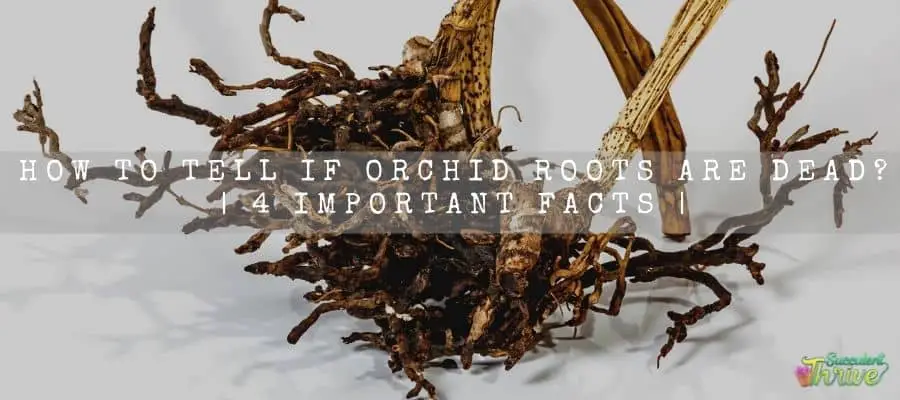
How To Tell If Orchid Roots Are Dead?
Dead orchid roots are usually dry. Further they could be soggy and brown in color. To ascertain whether the roots are dead or not, you could hold them and tug on them smoothly.
If the outer surface of the root moves away easily from a brown rot, it is undoubtedly dead.
Consider that you have an orchid which is dead, and you need to get rid of that. Best is to first observe the plant and its roots so that you could make yourself aware of what has exactly happened.
It avoids any potential repercussions in the future when you are growing orchids.
You could spot the rooted roots simply looking at their appearance. Usually, you could spot them in brown, and they would further be mushy to the touch and hollow too.
Over watering could attribute for this condition. On the other hand, if you could spot any brittle roots, that could be due to lack of adequate water.
Consider that you own an orchid which is alive, but the roots are all dried and have become mushy, chances are that you could still save the plant.
What you could ideally do is, take all dead roots whilst using sterilized and clean equipment.
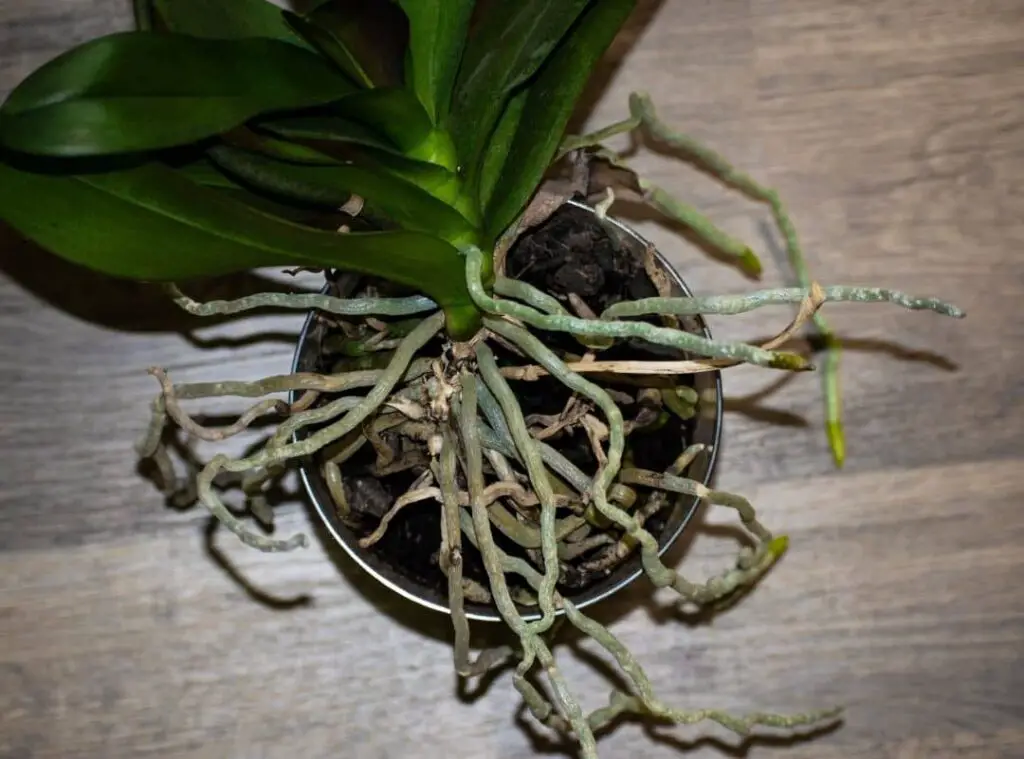
How healthy orchid roots looks like
Green and plump – If you could spot the green and plump roots, they are the healthy roots which have gotten water a little while ago. You should avoid them cutting or watering again.
Silvery or grey roots – Consider that you have an orchid which comprises silver or grey roots, that literally means they are doing well, but they would require some water though.
On the other hand, if your orchid consists of aerial roots which are white and firm, that means those are healthy roots too.
Can you cut dead roots off an orchid?
You could cut dead roots off from an orchid. You could do this ideally when you are repotting them. You could consider trimming the dead roots from an orchid once every couple of years.
Whenever you spot any dead roots, you need to trim them off prior to repotting them.
You could utilize shears to trim them off. However before using them, ensure they are sanitized and with cleanliness.
You could trim the dead roots roughly about an inch above from where it has started to die.
Once you trim them off, it could make sure that the plant could grow again with healthy roots after you repot them.
You could spot dead roots in two different ways such as follows,
Brittle roots – when you spot your orchid has dry and brittle roots, you could expect them to be dead. You could further spot them in a wrinkled way too. Moreover, you could spot them in yellow as well.
Black roots – whenever you spot any black roots, they are undoubtedly dead. You cannot revive the plant no matter what you do to save it. As such you need to remove them off.
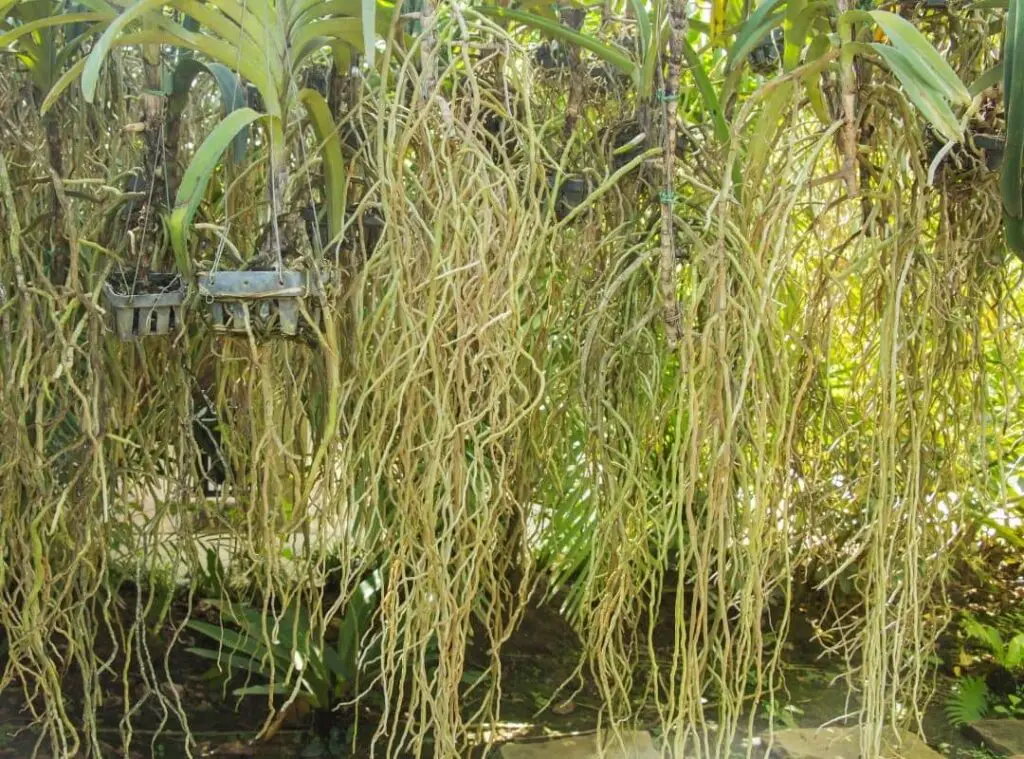
How to treat dead orchid roots?
Whenever you assume there are dead roots present in your orchid, you could start to check the roots base whilst removing the soil there.
If you could spot black roots and if you feel like they are mushy when you touch them, those roots are dead.In this circumstance you cannot save the plant no matter what you do unfortunately.
On the other hand, if you spot roots which are not black and mushy, you could follow the below guidelines and treat them.
First remove the plant from the pot.To start this off, you may use a chopstick or even a butter knife. It has to be ideally something which is long and slender.
Insert the material you use in the pot between the soil and the pot wall.
After that you could make the chopstick run to the edge of the pot. That will make sure soil and container contact loosen.
When you loosened the soil medium. You could tip the plant pot over smoothly. You could use one of your hands to hold the plant from its stem gently but in a vigorous manner.
Consider that you have a plastic container, then you could squeeze the pot sides so that it could ensure that the dirt from the container will loosen up.
In the meantime, you may take the plant out of the base and move it out slowly and smoothly.
As the next step, you could get rid of the old soil of the plant. To do that, you could place the pot to the side whilst holding the plant in the air.
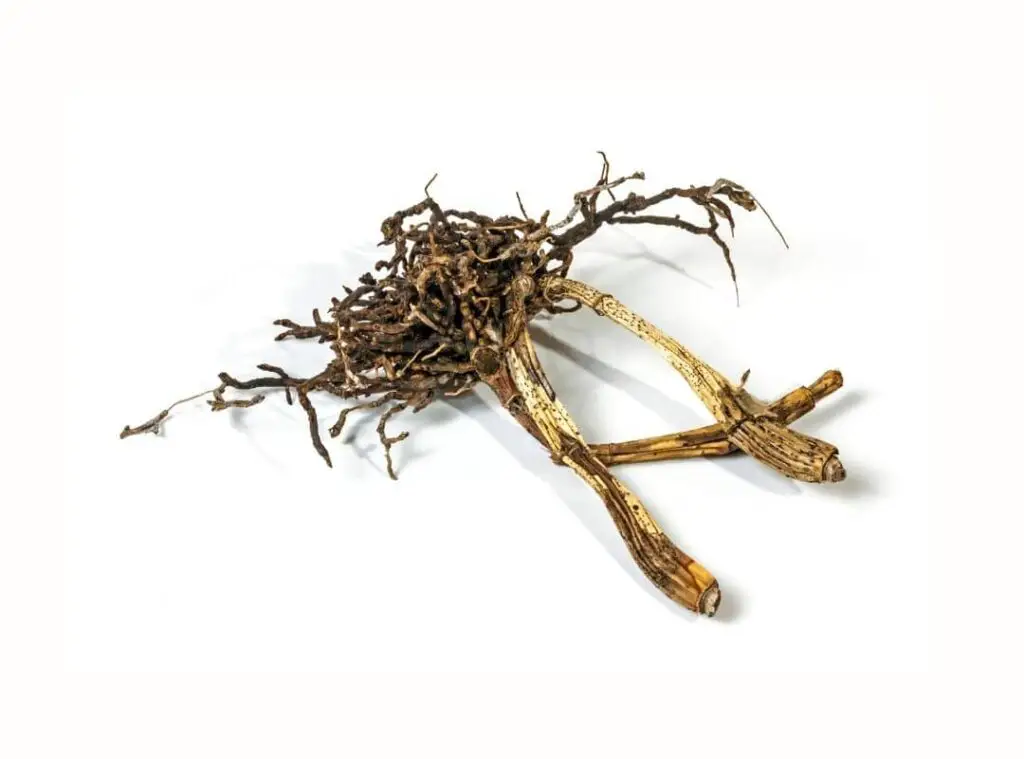
You may now get rid of the soil from the root ball. After that you could keep the plant on a clean surface.
Make sure you are using all clean and sanitized equipment to do this. To disinfect you could use substances such as household disinfectants like Lysol, dish soap, bleach, rubbing alcohol etc.
instead of that you may even boil the tools in water as well.
Moreover, you could trim off the black and mushy roots. You need to identify what you should trim off. Ideally you need to cut off the too soft and mushy roots.
Further, you need to remedy the rest of the roots whilst using a fungicide. That will make sure the plant recovers rapidly.
You may use a fungicide like bonide liquid copper fungicide for this
When you use a fungicide that will ensure that whatever the leftover bacteria and mildew do not cause further trouble for the plant.
Finally, you may leave the plant to dry and disinfect the pot as well. Moreover, you could repot the plant in a porous potting mix and provide it with adequate sunlight and keep watering them as appropriate.
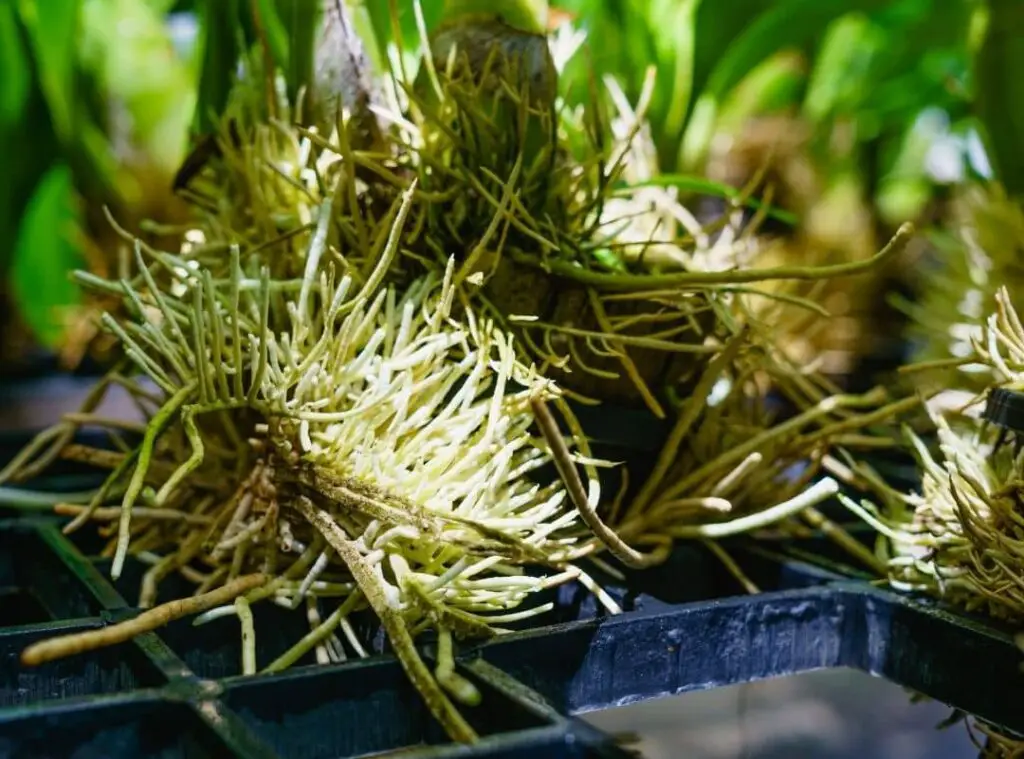
How to prevent orchid root from dying
You need to be vigilant to not over water the plant. Further you need to use a fast draining potting medium. In addition to that make sure the potting medium has a good aeration as well.
When you water them, ensure that the top inch of the soil surface should dry between watering sessions.
On the other hand, if you leave the orchid roots in a soggy situation for a prolonged period that could also lead to root rot.
Moreover, make sure that you provide them with bright and indirect sunlight. In addition to that you need to provide a temperature range between 55 degrees Fahrenheit – 75 degrees Fahrenheit.
They would do well in high humid levels. Moreover, when you water them, you need to make sure that the potting medium is not dry entirely when the top inch of the soil medium is dry.
Avoid growing the orchids in potting mediums which could retain too much moisture as those will cause root rots. You may use a orchid potting mix instead of using regular potting mix.
Read Next: Can An Orchid Live With Only Air Roots? | 8 Orchid Secrets |
